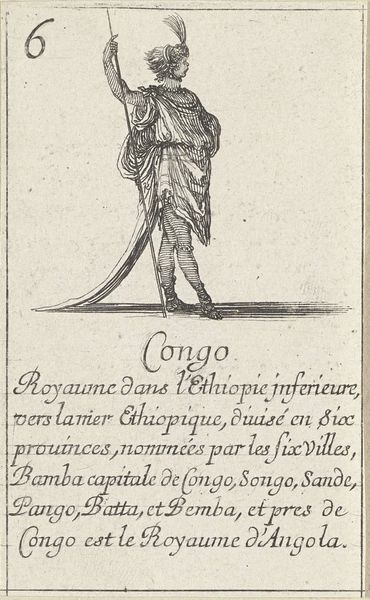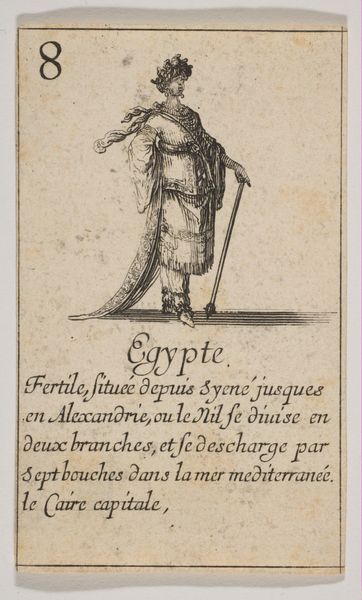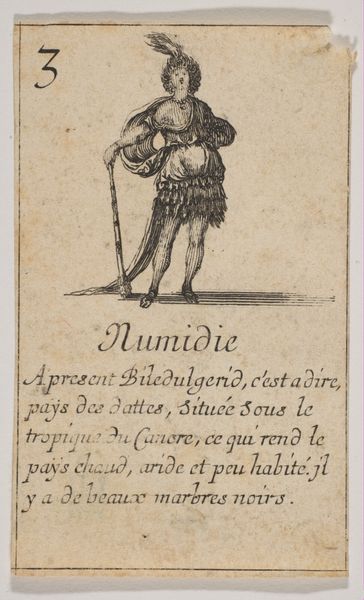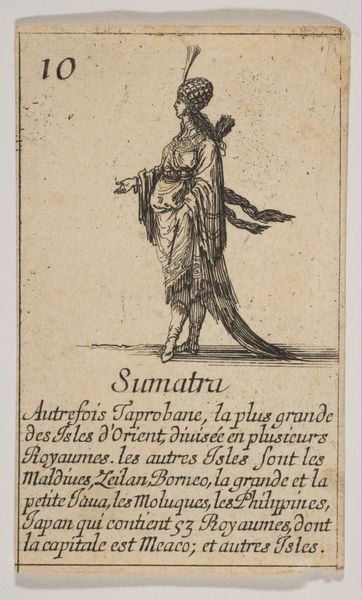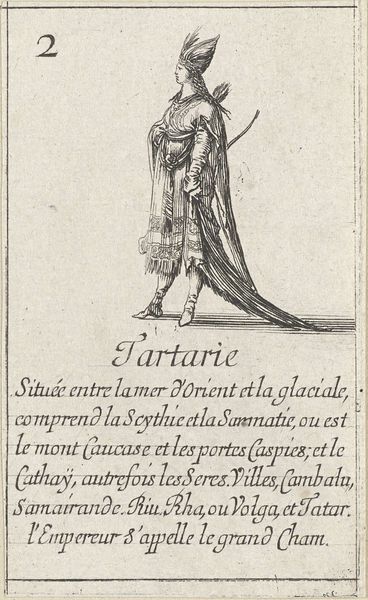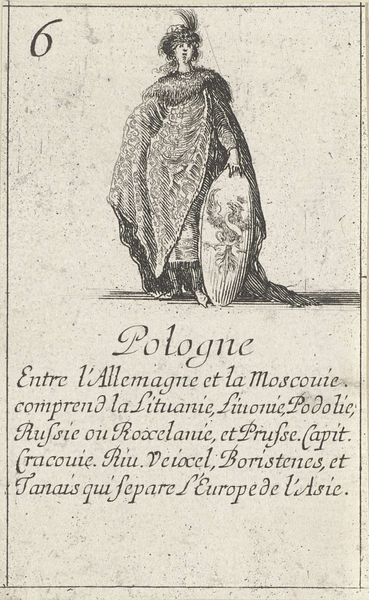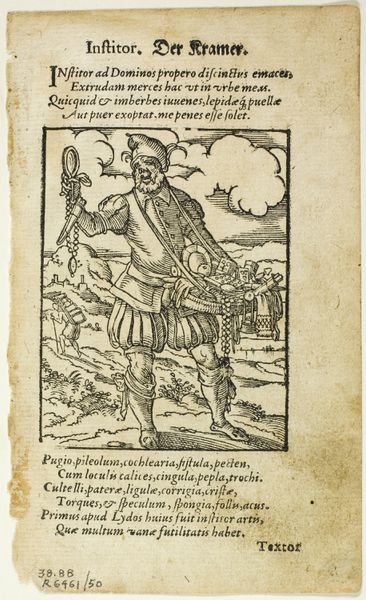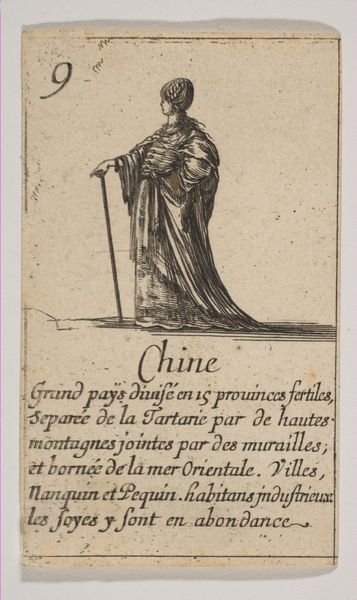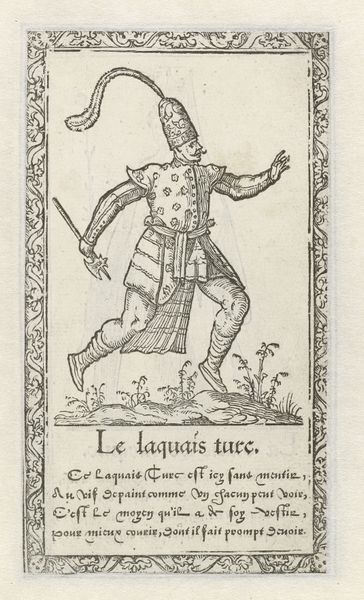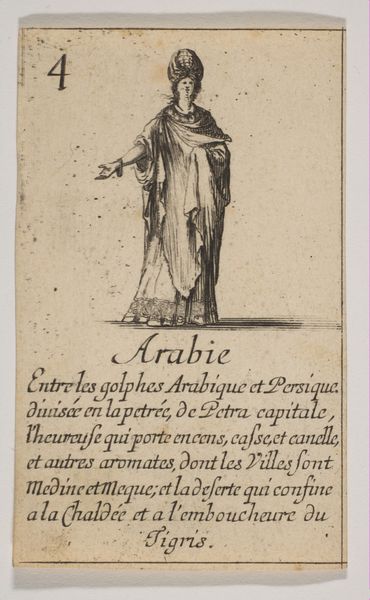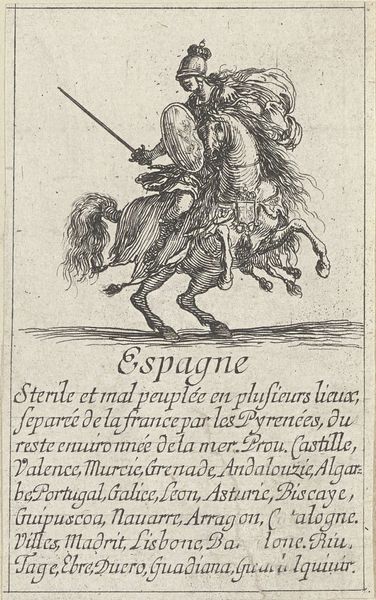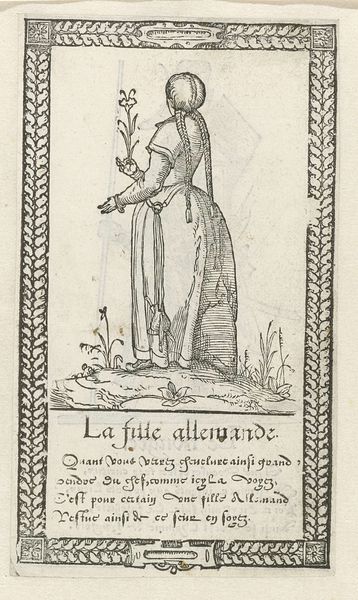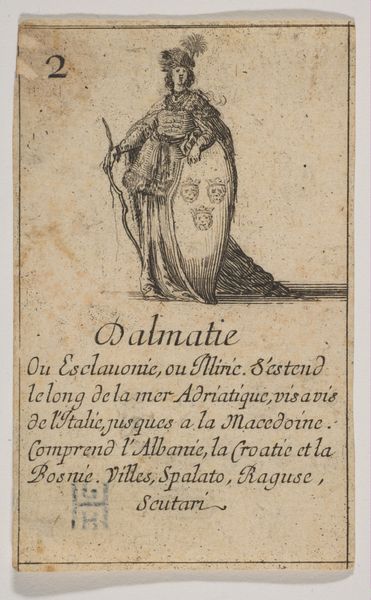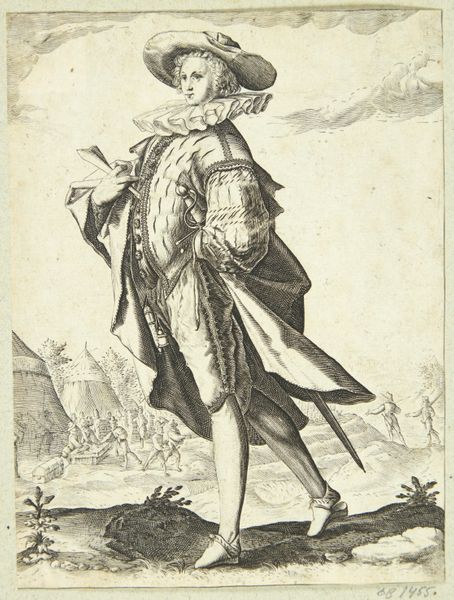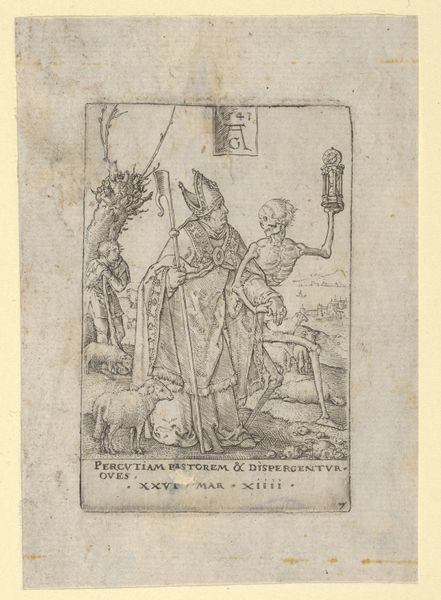
drawing, print, engraving
#
portrait
#
drawing
# print
#
figuration
#
line
#
history-painting
#
engraving
Copyright: Public Domain
Curator: Here we have "Congo, from "Jeu de la Géographie"," an engraving dating back to 1644 by Stefano della Bella. It's currently held at the Metropolitan Museum of Art. Editor: My immediate impression is one of studied detachment. The figure, presumably representing someone from Congo, is depicted with a formality that feels almost…clinical. Curator: Indeed. "Jeu de la Géographie," translates to "Game of Geography," was part of a series, and this particular engraving represents the Kingdom of Kongo. It's important to consider these depictions within the context of European exploration and colonialism. They served a very public role by attempting to visually codify foreign populations and regions. Editor: Exactly, and this visual codification is rife with problems. Notice the figure's clothing and bearing. Does it accurately reflect the cultural nuances of the Kingdom of Kongo, or is it filtered through a European lens, perpetuating potentially harmful stereotypes? The inclusion of this print raises complex questions of identity and representation. Curator: The artist relies on very clear, precise lines to define the figure and clothing. Stefano della Bella was a very skilled draughtsman, after all. One must remember that the primary objective was topographical and geographical knowledge rather than ethnic study. So we can analyze the figure as an allegorical personification rather than a proper study on Congolese. Editor: But can we really divorce the artistic choices from their political implications? This image, circulated widely, would have contributed to European understandings – and misunderstandings – of Congo and its people. Whether intended or not, that’s how it functions within our shared visual culture. Curator: I concede that the socio-political role of these types of images must be interrogated. When considered in its historical context, we can also understand the print as contributing to cartographic study, playing an important part in scientific, or pseudoscientific thinking of that period. Editor: I suppose this print can remind us of the complex layers of power dynamics involved in representation. Curator: Agreed. Perhaps it asks more questions than it answers and opens interesting avenues to understand history.
Comments
No comments
Be the first to comment and join the conversation on the ultimate creative platform.
